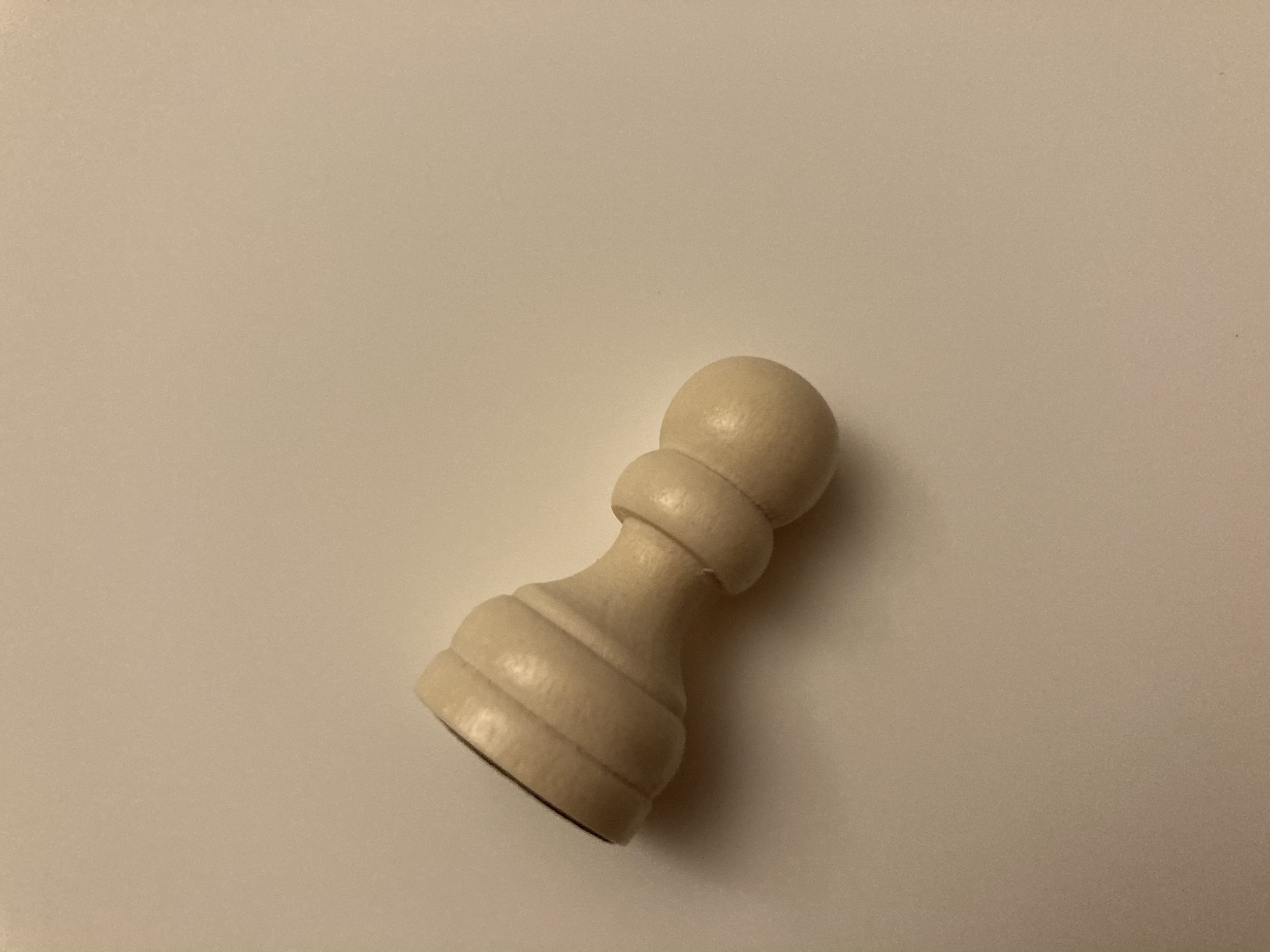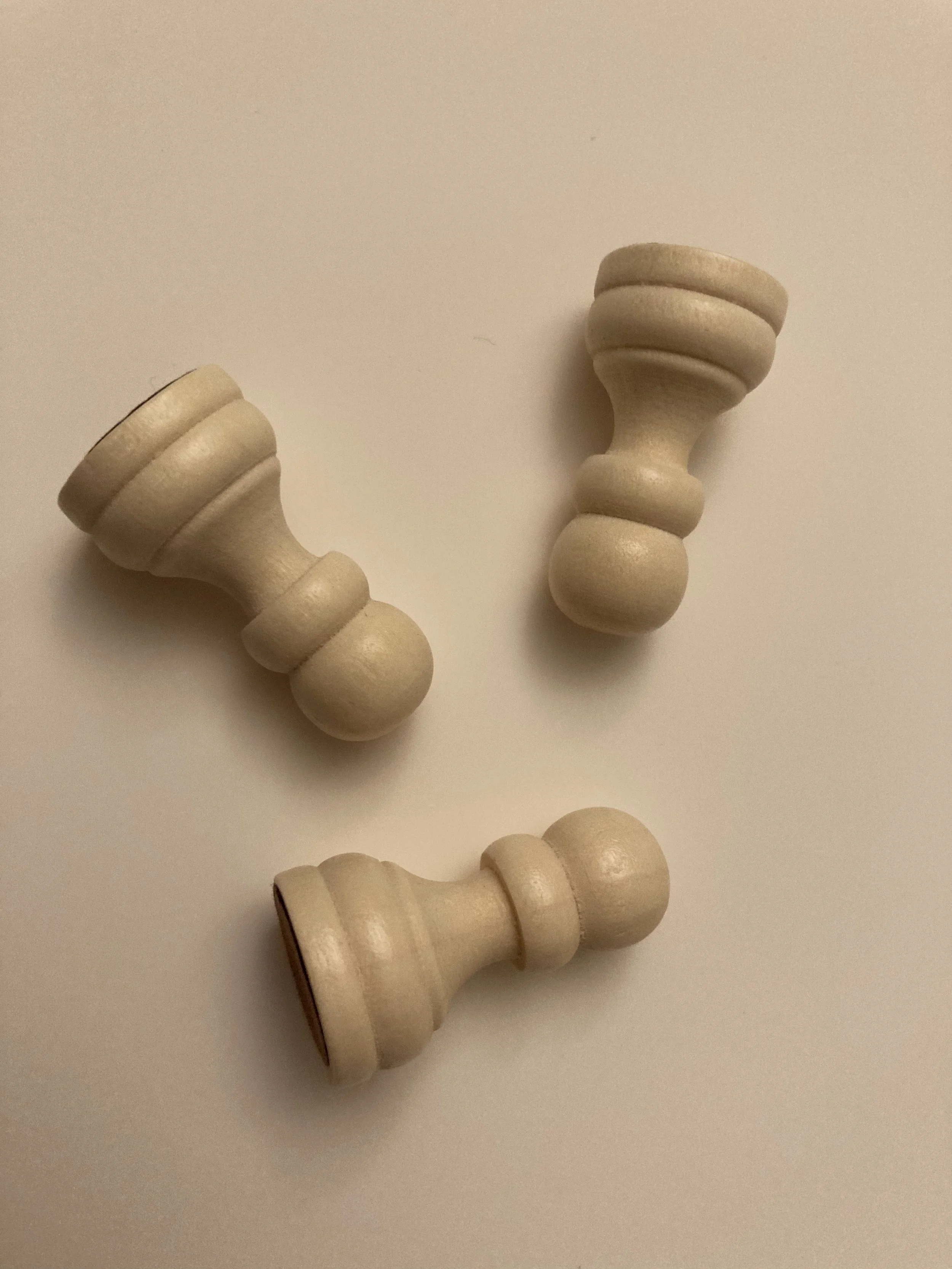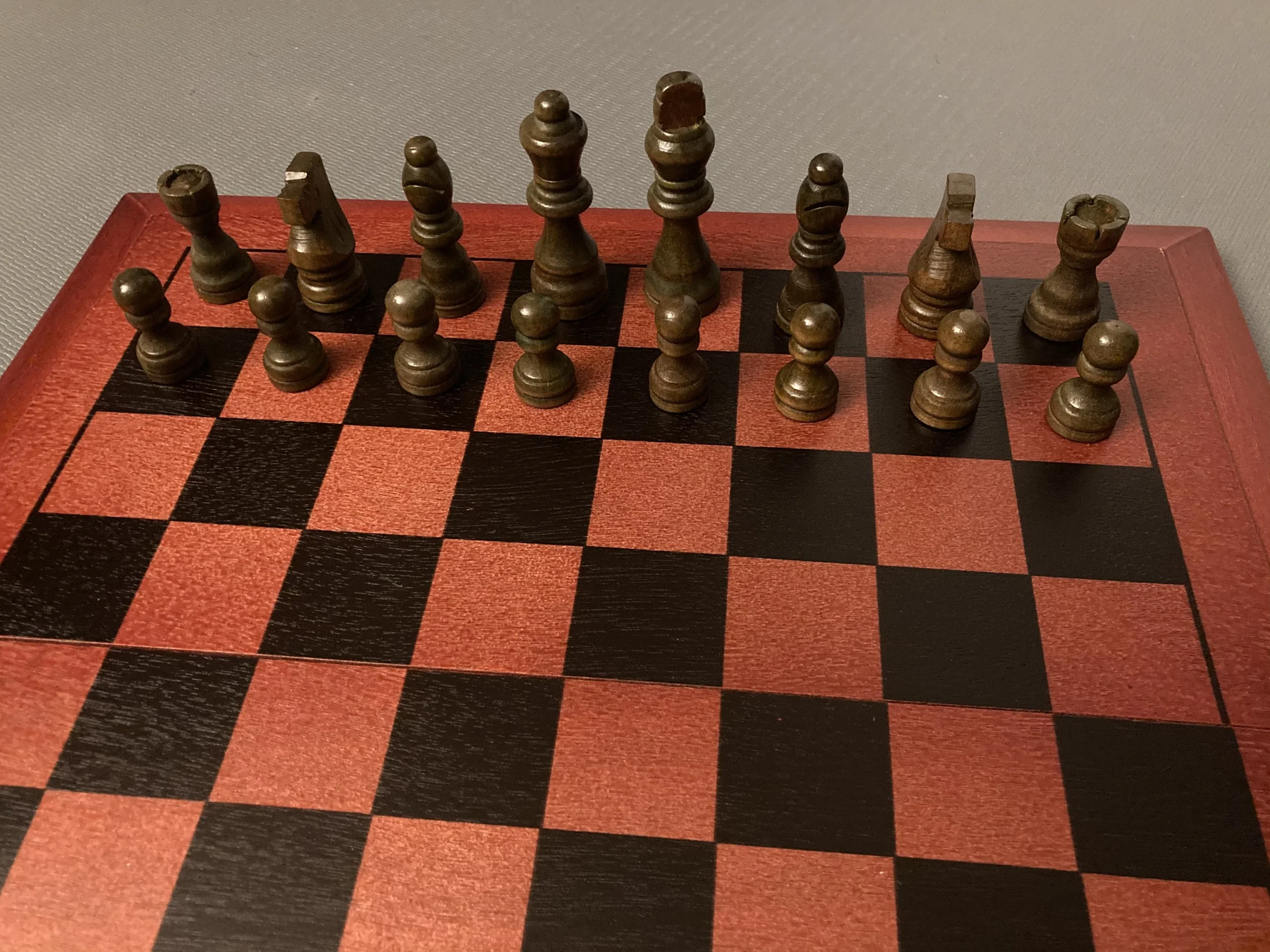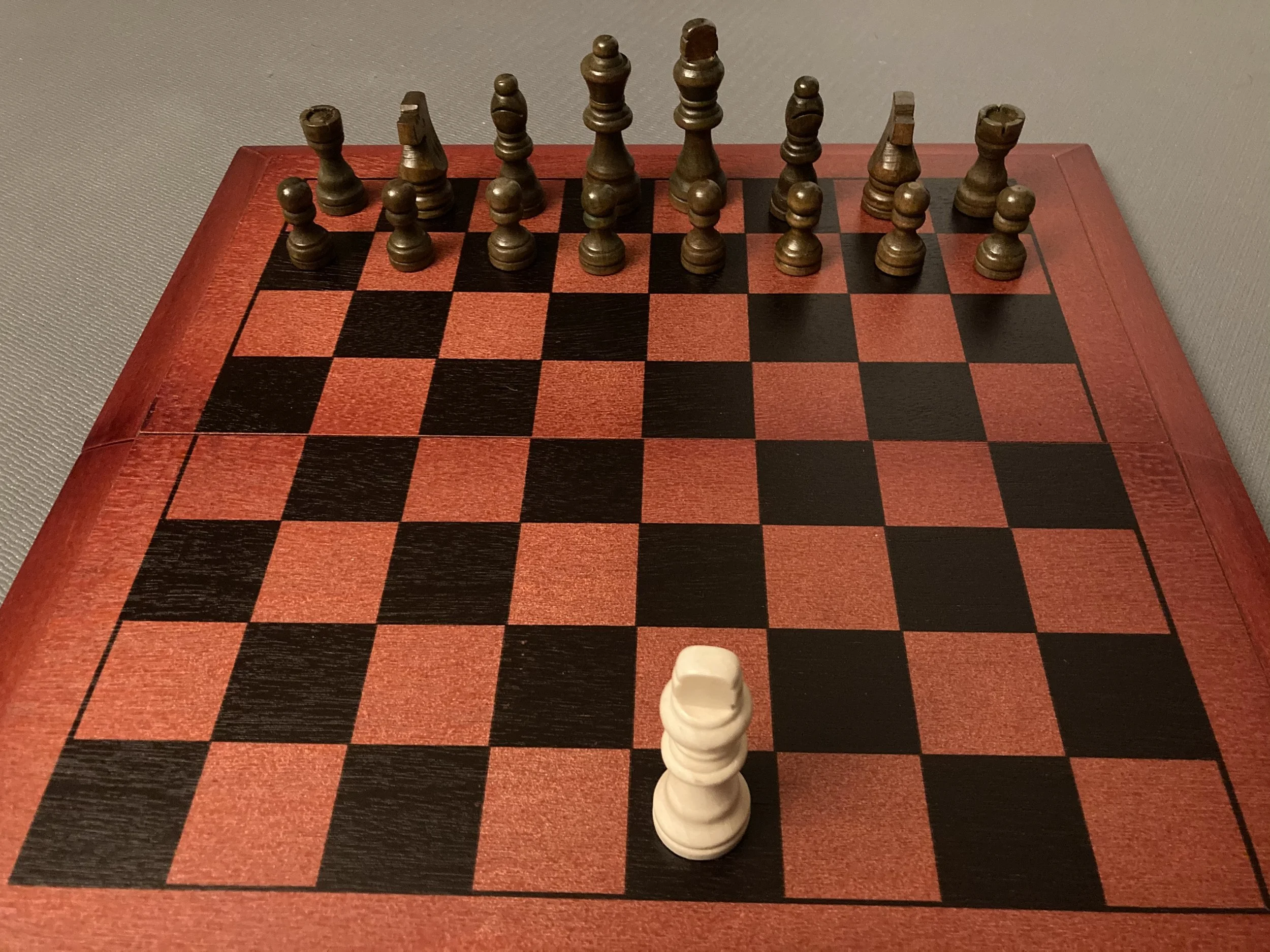Citizen’s Chess
An exploration of American Economic life

The goal of this project is to create a demonstration which simulates American Economic Life. A visual will be created using chess pieces which will simulate the various resources available to Americans as well as the obstacles they will face.
Overview
Two players will face off against each other. One player will play as “Xin” while the other player will play as “Entropy.” The game will consist of various rounds. To “win” in the simulation, “Xin” will need to checkmate his opponent. This need only be done once and many rounds may be played to achieve this goal. If “Xin” loses, the game is simply restarted with pieces being allocated according to the rules of the simulation. The game continues until “Xin” achieves checkmate or until they have exhausted all of the rounds allowed for the simulation.
“Entropy” on left; “Xin” on rightXin
The player who is assigned the role of “Xin” will start with a singular piece which shall be a king. The player may gain and lose pieces over the rounds played, however, the number of pieces allocated to them may never drop below one. Also, “Xin” must always have a king as one of their starting pieces.
Additional pieces may be allocated to “Xin” depending on the scenario played. In the “American Economic Life” scenario, the player is assigned additional pieces which will represent the befits that the American Government provides to all citizens at birth. This will include pieces to represent any inheritance from the government, dividends paid out to citizens, healthcare, etc. In the “American Economic Life” scenario, this nets the player the following additional pieces: 0 pawns, 0 knights, 0 bishops, 0 rooks, 0 queens.
“Xin’s” starting setupEntropy
The player who plays as “Entropy” will always be given the full number of pieces given to a player in traditional game of chess (i.e. one king, one queen, two rooks, two bishops, two knights, and eight pawns).
“Entropy’s” starting setupSetting Up
Set up the board according the the pieces allocated by the scenario the players have chosen to play. In the “American Economic Life” version, “Xin” is assigned 1 king and “Entropy” is assigned 8 pawns, 2 rooks, 2 knights, 2 bishops, 1 queen, and 1 king.
Ready to beginPlaying the Game (Phase 1)
The turn player may only move one piece per turn. Each piece follows traditional chess movements (ie. Bishops move diagonally). Once the turn player has moved a piece, the other player takes a turn. It is always necessary to move a piece. If the turn player cannot move a piece, then they forfeit the round and their opponent has achieved “checkmate.” Over the course of a round, any piece captured by “Xin” is set aside. The round continues until it ends in either a checkmate or a draw. If “Xin” achieves checkmate, then they have won the game and the simulation ends. In the event that “Entropy” achieves checkmate or the round results in a draw, the round ends. The boards is then reset, and a new round begins.
Phase 2
When setting up from Round 2 and onwards, “Xin” will receive additional pieces according to the pieces they had captured in the previous round, in the quantity that they had captured. That is to say, if previously they had captured 2 pawns and a 1 knight, they would begin then this round with 2 pawns and 1 knight in addition to their King. “Entropy” will always begin a round with 8 pawns, 2 knights, 2 bishops, 1 queen, and 1 king regardless of whether any were previously captured.
Once set up, Round 2 will begin.
“Xin” captured 2 pawns and 1 knight in the previous round
Phase 3
When setting up from Round 3 and onwards, “Xin” will receive additional pieces according to the number of pieces they had left on the board from the previous round. If “Xin” had 1 knight, left on their board (their two pawns had been captured), then they would begin the next round with 1 Knight in addition to their King. “Xin” would also gain pieces according to the pieces they had caught in the previous round if any.
Round 3 setup: “Xin” had captured 1 pawn, 1 rook, plus 1 bishop but lost 2 pawns in Round 2
Phase 4
On Round 5, “Xin” will receive 1 Queen as an additional starting piece.
“Xin” gained two pawns by capture and a bonus Queen
Phase 5
From Round 6 and onwards, if “Xin” had a queen on the board at the end of the previous round, they will have to flip a coin. If they get tails, they will not start the round with a Queen.
Coin flip to determine if “Xin’s” Queen remains on their boardPhase 6
From Round 9 and onwards, “Xin” will need to roll 3 dice at the start of their every turn. If they roll three “1” in a single turn, the Round will automatically end and will be considered a checkmate in favor of “Entropy.” It is possible for a round to end without “Xin” ever taking a turn. In the rare event that this happens, if “Xin” has a queen on the board, it is still necessary to flip a coin to determine if they keep the queen.
Xin’s Victory
If at any point “Xin” achieves checkmate, the simulation immediately ends. It is not necessary to play any additional rounds, regardless of how many were remaining.
“Xin” Victory 








